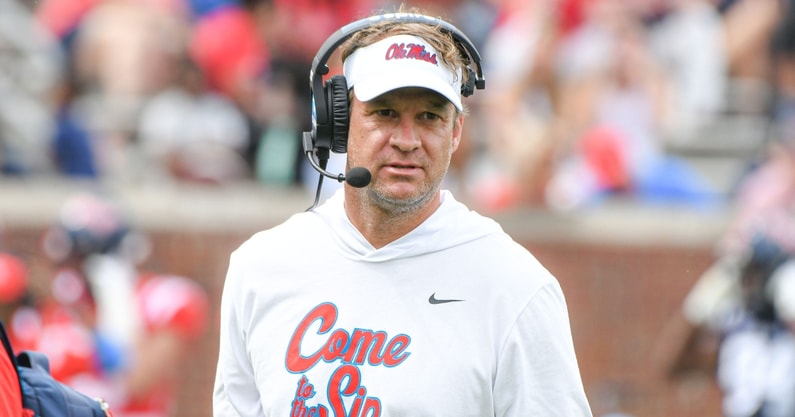Lane Kiffin explains his position on prioritizing money between facilities, NIL: 'NIL is what kids choose'

Ole Miss head coach Lane Kiffin has never shied away from sharing his opinion, and at SEC spring meetings he upheld that same standard.
The new NIL era of collegiate athletics has forced athletic programs to take a step back, reevaluate, and reprioritize their spending, as now NIL can be used as a valuable and essential piece in recruiting that can allow programs to score top prospects.
New facilities have also always served as a valuable tool in recruiting, but if came down to choosing one over the other, Kiffin made it very clear where he stands despite what some of his colleagues may believe.
“I think that depends where you’re at,” Kiffin said. “I’ve been pretty clear on that. I know that it’s not necessarily what an athletic director likes to hear necessarily and against what one of my colleagues says that matters, but NIL is what kids choose.”
NIL has definitely come to the forefront of recruiting, with incoming high school and transfer portal recruits placing a high priority on what different money-making opportunities are out there for them when they’re deciding on a school. But are the days of recruits being wowed by new weight rooms, locker rooms, training facilities, and stadium upgrades over now as a result of NIL? Kiffin believes so.
Top 10
- 1New
Bill Belichick
Netflix mocks coach, girlfriend
- 2
Bracketology
Way Too Early Tournament projection
- 3Hot
Paul Finebaum
Josh Heupel job security
- 4Trending
Fan falls from stands
Pirates provide update
- 5
Rece Davis
Addresses dispute with Mel Kiper
Get the On3 Top 10 to your inbox every morning
By clicking "Subscribe to Newsletter", I agree to On3's Privacy Notice, Terms, and use of my personal information described therein.
“They don’t choose the size of the weight room, how many bench presses, or whether they have a personalized computer in their locker. That’s changed over the last few years and you can’t fault them,” Kiffin said.
Athletic directors nationwide work hards toward upgrading, renovating, and breaking ground on facilities, spending millions of dollars in order to make sure the experience of their student-athletes and fans is top of the line. But would their money be more well spent directly in the pockets of their student-athletes?
Only time will tell what’s the best way to go about merging the world of NIL and recruiting, along with balancing that with the priority of building new facilities. And Kiffin believes the preferences of recruits are an unavoidable side effect that now comes with the new college football landscape.
“You’ve got 17, 18-year-old kids, or families a lot of times that don’t have much financial resources and here’s your chance to get paid,” Kiffin said. “And so the people that say it’s ridiculous for them to chose where to play football or get their degree based off of what they get paid, that’s not very realistic.”